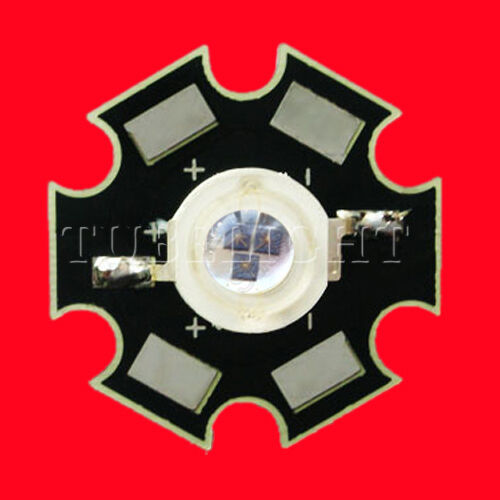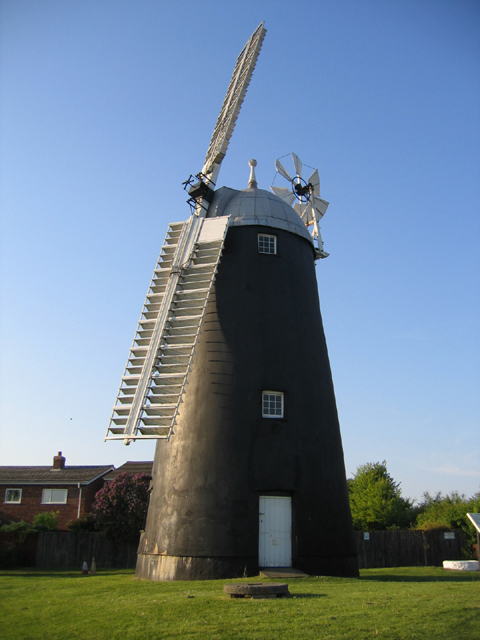20 Apr 2013
Optical communications in the 19th century
With the recent upsurge in interest in long range optical communications it is easy to forget that optical data communications over long distances predates radio communications by many years. In those far-off days the data was morse code and the light came from the sun in the form of a heliograph mirror that reflected the sun's rays over long distances in daylight. Keying was usually by tilting the mirror or by keying a grill placed in front of the mirror. See http://www.modulatedlight.org/Modulated_Light_DX/Heliograph.html . Best DX achieved in the 19th century was well over 200km using these methods!
Labels:
helio
Infra-red "over the horizon" tests?
Reading Stuart G8CYW's article on the history of optical communications in the latest RadCom, I am considering repeating my recent NLOS optical test using infra-red (IR) rather than visible light as there may be some advantages with clear air forward scatter propagation by going to lower near optical frequencies. At least IR beams are not visible to the casual viewer, so are less likely to create problems. However, IR can be more dangerous than visible light because the blink reaction that occurs with visible light does not happen. When using high power IR LEDs it is therefore even more important not to look into the beam and to take care where the beam is aimed, especially at close range. Never ever look into the beam at close range.
A suitable IR PIN diode is the SRH203-FA from Osram, widely available on eBay. As you can see from the image, the PIN diode detector has IR filtering (black colour) , so may be usable in daylight with less degradation than would be the case with red LEDs. I already use the SRH213 PIN diode for visible red optical comms.
 I am looking for a suitable 1W-3W IR LED and they are available, but I have yet to find one in the 10mm "fat" standard LED package that I use currently on 481THz.
I am looking for a suitable 1W-3W IR LED and they are available, but I have yet to find one in the 10mm "fat" standard LED package that I use currently on 481THz.
There are 3W IR LEDs available from China that should be suitable. See eBay item 370784927290 for example in the star package. This would be some 10dB more output than I currently use, although I am not sure of the beam divergence which may be greater than with the 10mm package.
Nanowave over-the-horizon experiments are very much like microwaves, except that the test equipment is a GREAT deal simpler!
A suitable IR PIN diode is the SRH203-FA from Osram, widely available on eBay. As you can see from the image, the PIN diode detector has IR filtering (black colour) , so may be usable in daylight with less degradation than would be the case with red LEDs. I already use the SRH213 PIN diode for visible red optical comms.
There are 3W IR LEDs available from China that should be suitable. See eBay item 370784927290 for example in the star package. This would be some 10dB more output than I currently use, although I am not sure of the beam divergence which may be greater than with the 10mm package.
Nanowave over-the-horizon experiments are very much like microwaves, except that the test equipment is a GREAT deal simpler!
13.8V distribution board
 |
| http://www.hamradio.co.uk/sysimages/origimages/PW-100-1_pr5198_1.jpg |
I see that Martin Lynch sell a Mydel PW-100 4-way distribution board with fuses on each output. Although a similar unit could easily be built, this is not a bad price for a ready-made unit complete with spare connectors at around 30 pounds.
When arranging my new shack I shall have to either buy one of these or make up something similar.
Labels:
martin lynch,
mydel,
pw-100
A walk in the sunshine with the Ventus GPS tracker
As the weather was so beautiful this afternoon (full sun and around 13 deg C) I decided to do a country walk and track my progress using the Ventus GPS data logger bought from Martin Lynch and Sons. The walk was 10.7km and took about 2hrs 34 minutes with a couple of relaxing breaks for a drink and a snack. No ham radio gear was taken this time, because I forgot to charge up my VX2 handheld. Next time, HI. Incidentally Quy was where my optical beacon reached (over the horizon) a few weeks ago. When you walk that far it seems a VERY long way away!
This is a plot of the walk taken with the low cost GPS tracker then plotted with Google Earth.
This is a plot of the walk taken with the low cost GPS tracker then plotted with Google Earth.
 |
| Today's walk in the Cambridgeshire countryside |
Labels:
martin lynch,
ventus g730,
walk
My wife's choral concert next weekend in Cambridge
 |
| Concert Poster |
19 Apr 2013
Loopy on 10m - first results
This afternoon I managed to catch 10m open and got some excellent spots from 4X1RF with reports as good as -5dB S/N using 2.5W to the small magnetic loop taped to the chair in the bedroom shack. Without doing too scientific a test, the impression I get is the loop is every bit as good as the external longwire end-fed antenna in the garden.
I may move the magnetic loop up into the loft in the coming days to see how it performs there, pre-tuned to the WSPR frequency. Based on results in the bedroom, I would expect it to work well.
Labels:
loop loopy 10m wspr
VHF/UHF take-off at new QTH
This evening I went up to our new, well being newly renovated, bungalow on top of our local "hill" immediately next to the Burwell windmill.
Currently the roof is being re-tiled and there was scaffolding everywhere, so I took the opportunity to climb up a ladder to the roof level to judge the VHF/UHF take-off.
Well, the good news is that even at just above the gutter level there is an excellent virtually unbroken (clear of houses) take-off from the north west all the way around to the south. With an antenna a few metres above the roof apex height, it should have a pretty good take-off in most directions. It just begs me to get some better gear for the 2m, 70cm and possibly 23cm and 3cm bands. We'll see.
I was also checking out optical communications possibilities. At lower heights, the horizon view is obstructed, but I should be able to arrange my optical beacon for cloud-bounce and clear air forward scatter, non line-of-sight, tests with the beacon firing up at around 20 degrees up from horizontal in many directions out towards Cambridge and beyond.
Currently the roof is being re-tiled and there was scaffolding everywhere, so I took the opportunity to climb up a ladder to the roof level to judge the VHF/UHF take-off.
Well, the good news is that even at just above the gutter level there is an excellent virtually unbroken (clear of houses) take-off from the north west all the way around to the south. With an antenna a few metres above the roof apex height, it should have a pretty good take-off in most directions. It just begs me to get some better gear for the 2m, 70cm and possibly 23cm and 3cm bands. We'll see.
I was also checking out optical communications possibilities. At lower heights, the horizon view is obstructed, but I should be able to arrange my optical beacon for cloud-bounce and clear air forward scatter, non line-of-sight, tests with the beacon firing up at around 20 degrees up from horizontal in many directions out towards Cambridge and beyond.
18 Apr 2013
Loopy results on 15m
 |
| WSPR results today with 2.5W to 80cm loop in the bedroom on 15m |
.JPG) |
| Loop antenna in the bedroom (notice the grandchildren's toys!) |
I should have tried magnetic HF loops long ago.
UPDATE 1600: Just QSYed to 14MHz with the loop in the bedroom and power reduced to 500mW and still getting plenty of WSPR reports out to 2600km or so so far.
16 Apr 2013
Going loopy on 10m
 |
| Prototype 10m TX loop using 6mm copper pipe |
If successful, the idea will be to put this up in the loft at the new bungalow and use it with WISPY and a small dedicated netbook PC to run 10m WSPR.
Labels:
10m,
28mhz,
loop,
transmit loop
12 Apr 2013
Simple, fool proof 1296MHz transverter?
Thinking about my new QTH on top of our East Anglia "hill" (aka 20m bump) I am wondering if I should consider 1296MHz operation for the first time, if only to monitor/try the band in UKAC contests with relatively local stations. Although I have listened (briefly) on 23cm years ago with a borrowed RX converter, I've never transmitted on the band with any mode.
What I am looking for is a SIMPLE transverter for the band, either a no-tune kit or a simple ready built unit. I have no test gear for this band, which is why I've not really considered the band before. The driver would be the FT817, so any suitable band could be used for the IF.
The Down East Microwave 1296MHz transverter may be a possibility. See http://croatia-microwave.blogspot.co.uk/2010/12/w1ghz-rover-transverter-for-1296-mhz.html for a report of one built.
Incidentally I remember the 23cm antenna I used back in the 1970s with the borrowed converter: it was a 4 element yagi made with 2.5mm silver plated wire. The whole antenna sat in the palm of the hand, but worked well, even indoors mounted on a piece of bamboo cane as the mast! If I remember correctly, the design was in an early edition of VHF Communications, a magazine I subscribed to back in the 1970s.
What I am looking for is a SIMPLE transverter for the band, either a no-tune kit or a simple ready built unit. I have no test gear for this band, which is why I've not really considered the band before. The driver would be the FT817, so any suitable band could be used for the IF.
The Down East Microwave 1296MHz transverter may be a possibility. See http://croatia-microwave.blogspot.co.uk/2010/12/w1ghz-rover-transverter-for-1296-mhz.html for a report of one built.
Incidentally I remember the 23cm antenna I used back in the 1970s with the borrowed converter: it was a 4 element yagi made with 2.5mm silver plated wire. The whole antenna sat in the palm of the hand, but worked well, even indoors mounted on a piece of bamboo cane as the mast! If I remember correctly, the design was in an early edition of VHF Communications, a magazine I subscribed to back in the 1970s.
Subscribe to:
Posts (Atom)




